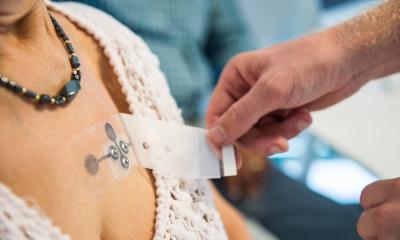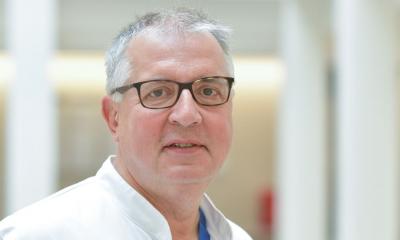Olomouc aims for national telemedicine centre
Report: Rostislav Kuklik
The teaching hospital in Olomouc aims to become a national centre for telemedicine. A telemedicine system is currently used by the hospital’s Internal Medicine Department 1 for cardiac patients and almost a hundred patients are remotely monitored via a telesystem implemented by the hospital.
Further, in May 2010, this was the very first Czech medical facility to introduce a new fully automated CareLink system (www.medtronic.com/carelink) a remote monitoring service connecting cardiac device patients to their clinic from home or away, enabling physicians to monitor remotely the clinical status of the patients with implanted pacemaker or implantable cardioverter-defibrillator (ICD).
‘Building up the national telemedicine centre will need to be realised in several consecutive steps,’ said department head Dr Táborský. ‘The fundamental prerequisite for the creation of the whole project is to secure hardware that is efficient enough to be able to handle massive data in-flow. Fortunately, teaching hospital submitted the project documents to the Ministry of Education jointly with the Palackého University in Olomouc, and the chances of realisation are promisingly high because subsidies from the European Union structural funds are also available for financing,’ he explained. The national centre for telemedicine should serve the needs of patients around the Olomouc region and will also coordinate activities, such as telemedicine centres in other university and regional hospitals. ‘We expect that we would have finally created the conditions for remote monitoring of over ten thousand patients. Presently we are at the clinic approaching the first hundred results and these are truly excellent. We can quickly respond to any negative changes in patients with implanted devices, thus preventing serious complications highly likely to occur without remote monitoring and quick intervention.
The remote monitoring of patients with arrhythmias is not yet funded through health insurance, he pointed out. ‘The operation is only possible thanks to grants and cooperation with the pacemakers and/or ICDs manufacturers that provide patients with home monitors free of charge. Unfortunately, as yet re-imbursement regulations for the medical work needed to evaluate data recorded from home monitors have not been systematically resolved. The provision of such a service is only possible due to the enthusiasm of the medical personnel involved. However, financing negotiations are already underway with insurance companies. I suppose consensual proceedings of the code for the remote monitoring of patients will be successfully completed within the next year,’ Dr Táborský predicted.
This project's big asset and advantage over other similar ones is that the centre-to-be is calculating with additional usage from the very beginning. There are already several suggestions on the table: Cooperation with diabetology department on blood glucose home monitoring or cooperation with the pain department on full monitoring of their patients, especially for that suffering break-through cancer pain. ‘It seems the general consensus about future healthcare system needs does exit, not only between healthcare providers and payers but also amongst political representatives. It is widely recognised that only full computerisation of the healthcare sector, and the introduction of e-Health systems, are the way to enable the future sustainability of the current system. Similar efforts leading to the creation of home monitoring centres are also progressing in other EU countries, with just about the furthest advance in Germany, where the payment code for remote patient monitoring for various disease conditions has been available since last year,’ Dr Táborský pointed out.
So, hopefully, the future is about changes in Czech Republic too.
07.07.2010











